
Canola contracts for 2023-24 reached contract lows this session and their lowest close seen over the life of the contract.

Canola contracts for 2023-24 reached contract lows this session and their lowest close seen over the life of the contract.

Negotiations with a federally appointed mediator will be crucial during Wednesday and Thursday of this week, while employees from two Locals of the Grain Services Union representing Viterra staff could strike as early as the afternoon of Jan. 5.
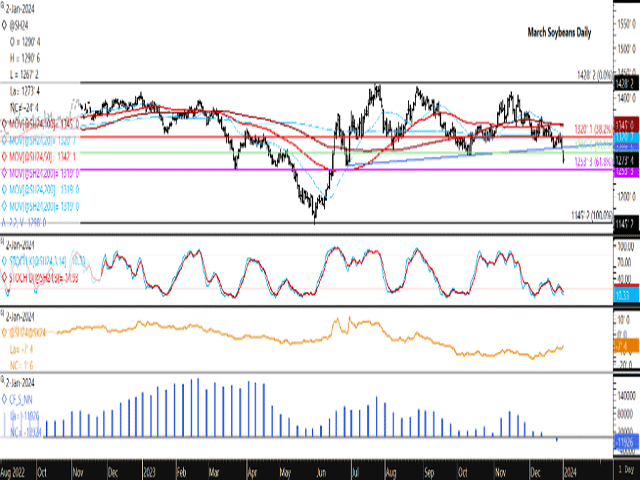
Noncommercial traders moved into a bearish net-short futures position during the holiday season and for the first time since February 2020, while continuing to control the current price direction. The March/May spread is seen narrowing a commercial sentiment slowly...

Corn futures led commodities lower in 2023 with widespread losses faced over the year across the grains.
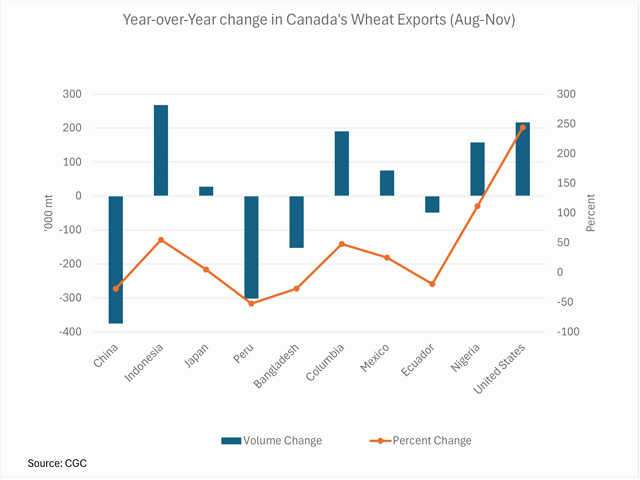
Canada's wheat exports remain ahead of the forecast pace after four months, despite an upward revision in the forecast for 2023-24. This study looks at volumes shipped to Canada's largest markets from the previous crop year.
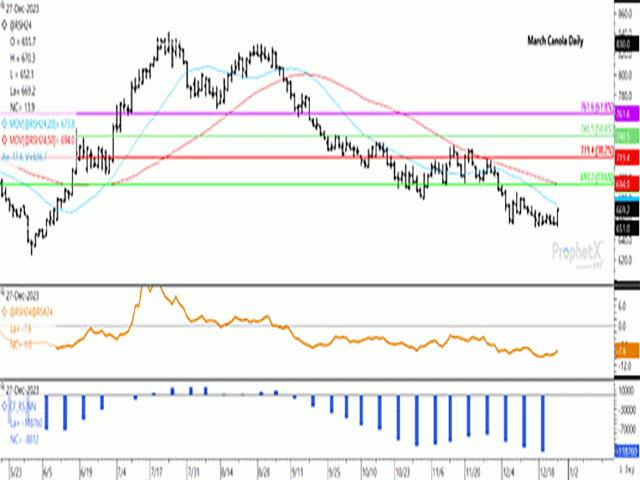
March canola closed sharply higher this session, the first trade since the Christmas holiday.
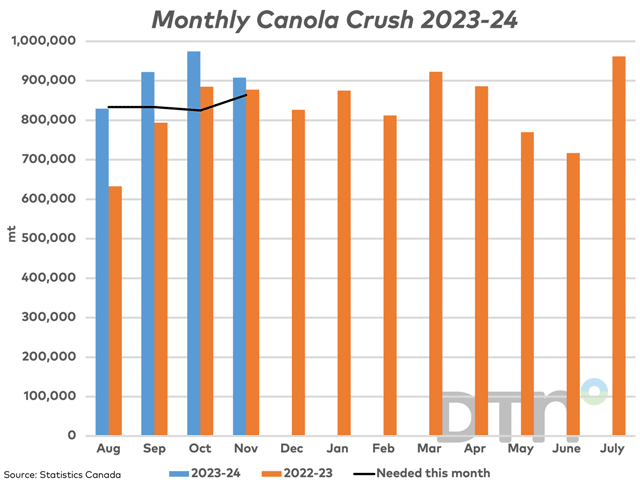
Canada's November canola crush fell from the record volume crushed in the month prior while the overall pace of crush remains ahead of the government's forecast pace.
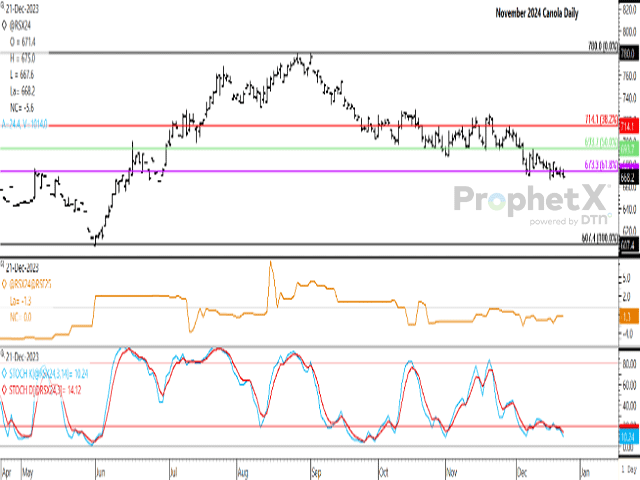
The November canola contract is showing technical weakness this week and poised to close below retracement support.
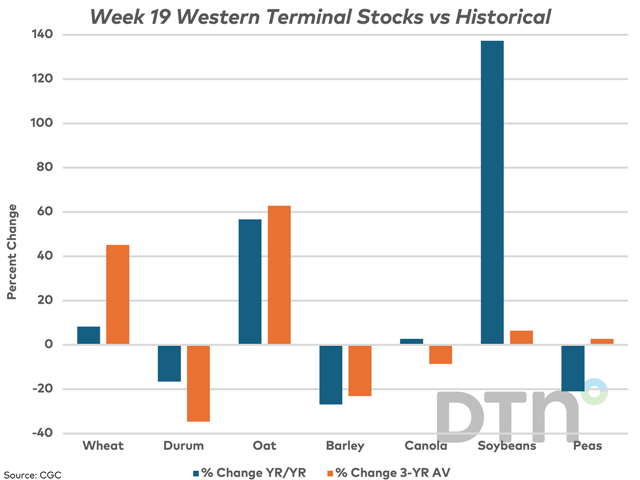
The Grain Marketing Program's Weekly Performance Update shows terminal stocks in week 19 higher than a year ago and higher than the three-year average. This study breaks down this data to show what crops make up this volume.
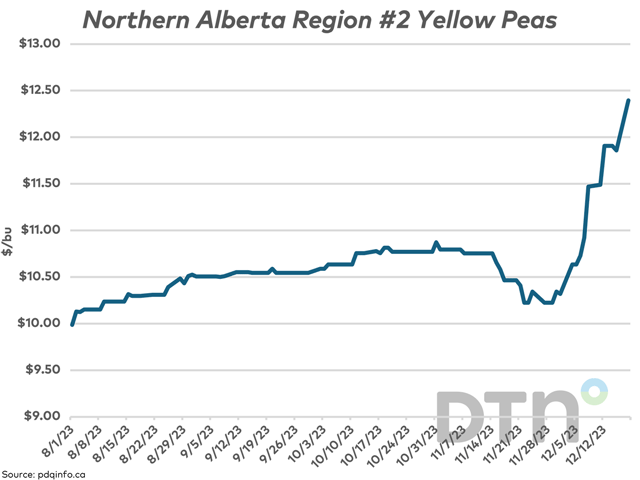
Monday's pdqinfo.ca cash bids show further upside in the yellow pea bid across most of the Prairies, while the market is inverted with a sharp drop shown for delivery in February.
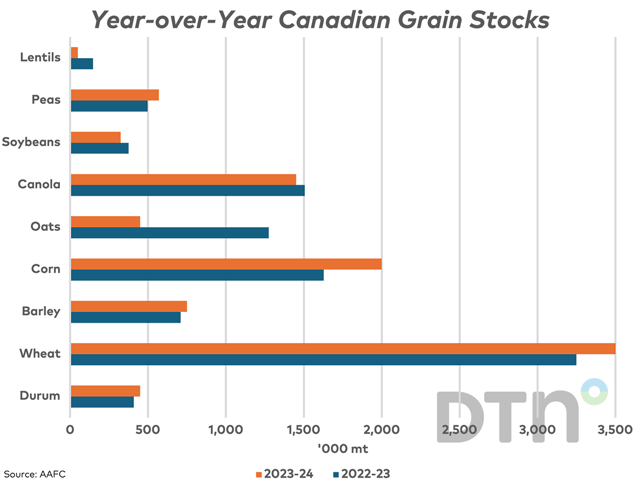
AAFC revised its supply and demand tables in December based on Statistics Canada's recent production estimates.
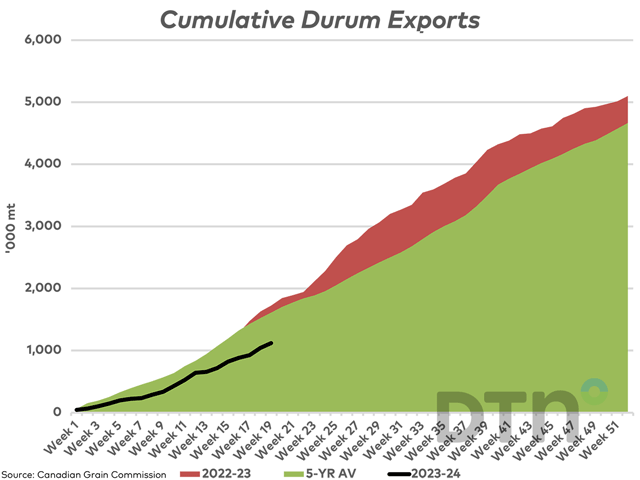
Durum exports are down from last year and the five-year average, while may be on track to reach the current forecast released by AAFC. The European situation bears watching.
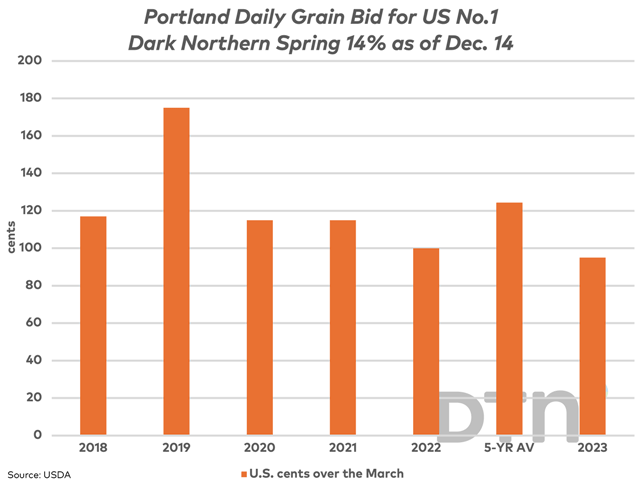
The Dec. 14 basis for Portland spring wheat is weaker than the five-year average, while January trade is showing even further weakness.
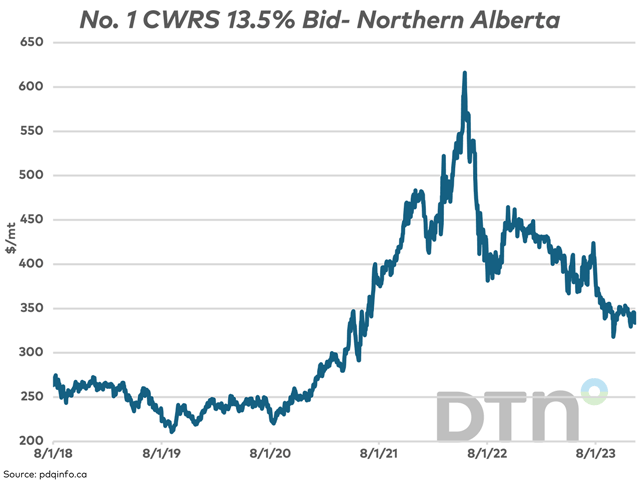
As of this week, the U.S. spring wheat basis is weaker than the five-year average. Depending on how it is calculated, the No. 1 CWRS 13.5% basis for the Northern Alberta region, one of nine regions monitored by pdqinfo.ca, is slightly stronger or slightly weaker than average.
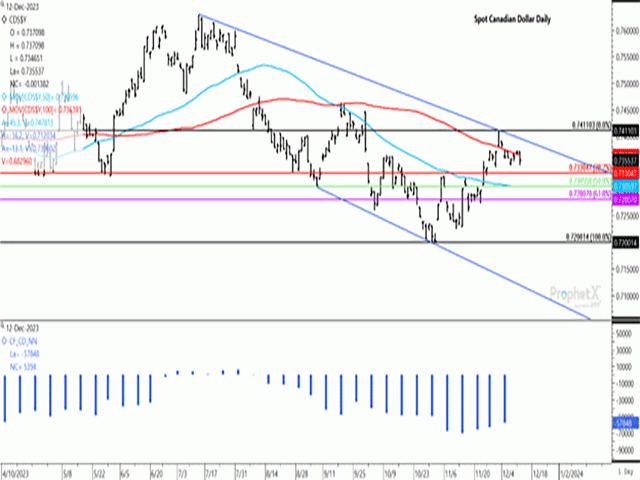
Once again, the spot Canadian dollar has failed to sustain a move above its 100-day moving average. A continued sell-off in crude oil is viewed as a bearish feature while this week's focus will be on the U.S. rate decision.
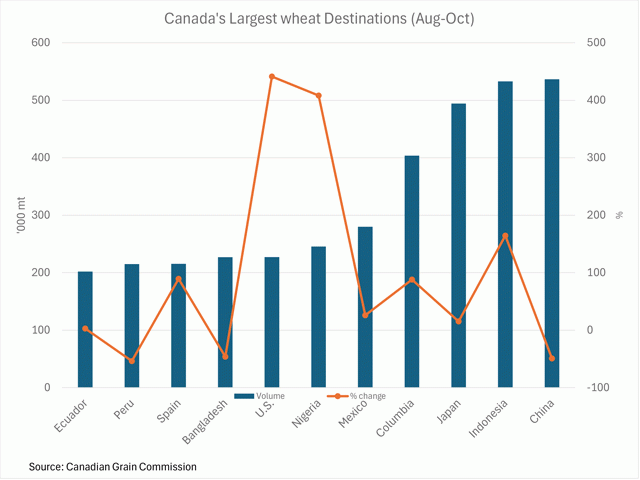
Canada's wheat exports as of week 18 are up 12.5% from one year ago while all-wheat exports are up 3% from a year ago. This remains ahead of the pace needed to reach current government forecasts, with a year-over-year increase in volumes reported for some of the largest...
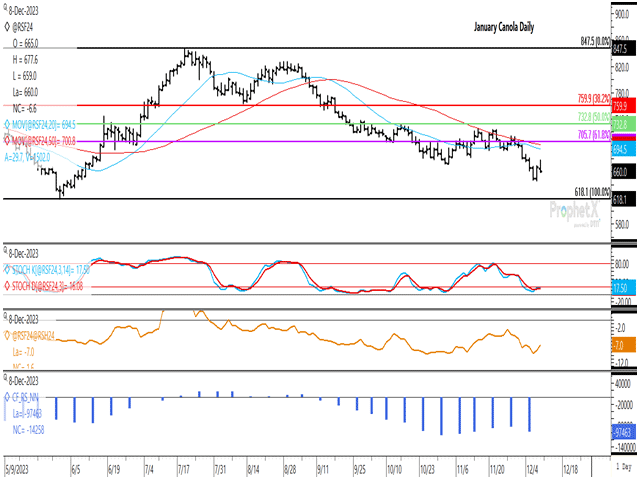
January canola tried to rally for a second day on Dec. 8 but spill-over trade from the WASDE report led to a lower close. Exports remain key to this market.
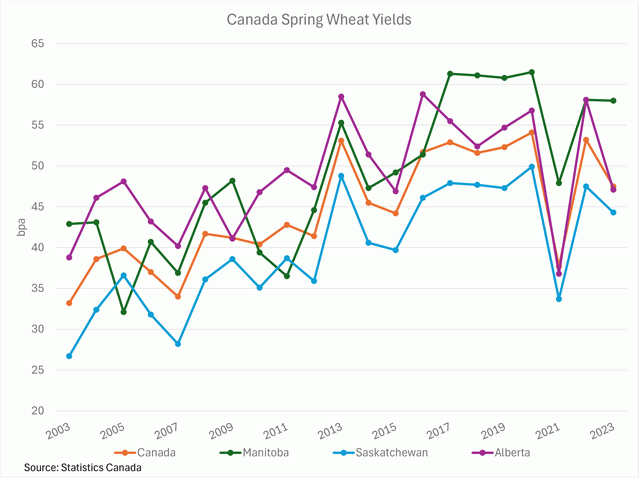
Prairie spring wheat yields landed below their respective 20-year trend in 2023 for the second time in three years.
The following is a look at miscellaneous Canadian trade data for October as it applies to crop and crop product trade.
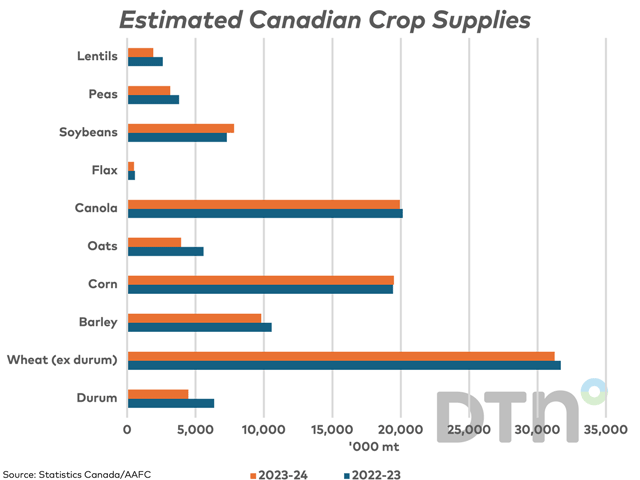
This study looks at the year-over-year change in crop year supplies when factoring in Statistics Canada's revised production estimates.
DIM[2x3] LBL[blogs-canada-markets-list] SEL[[data-native-ad-target=articleList]] IDX[2] TMPL[news] T[]
DIM[2x3] LBL[blogs-canada-markets-list-2] SEL[[data-native-ad-target=articleList]] IDX[5] TMPL[news] T[]